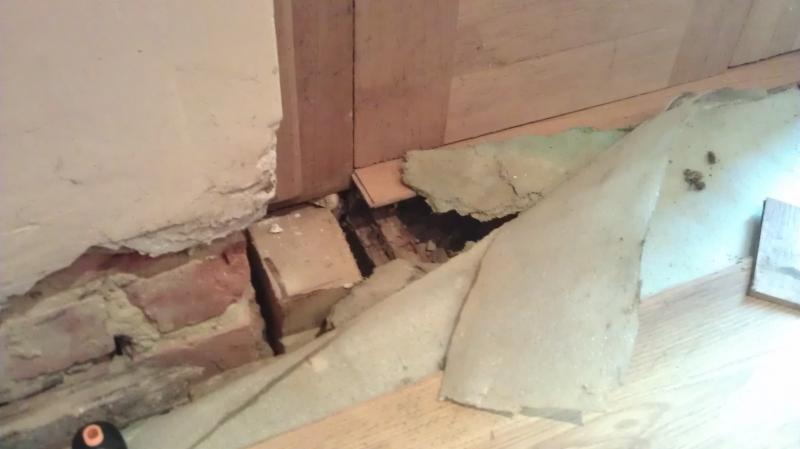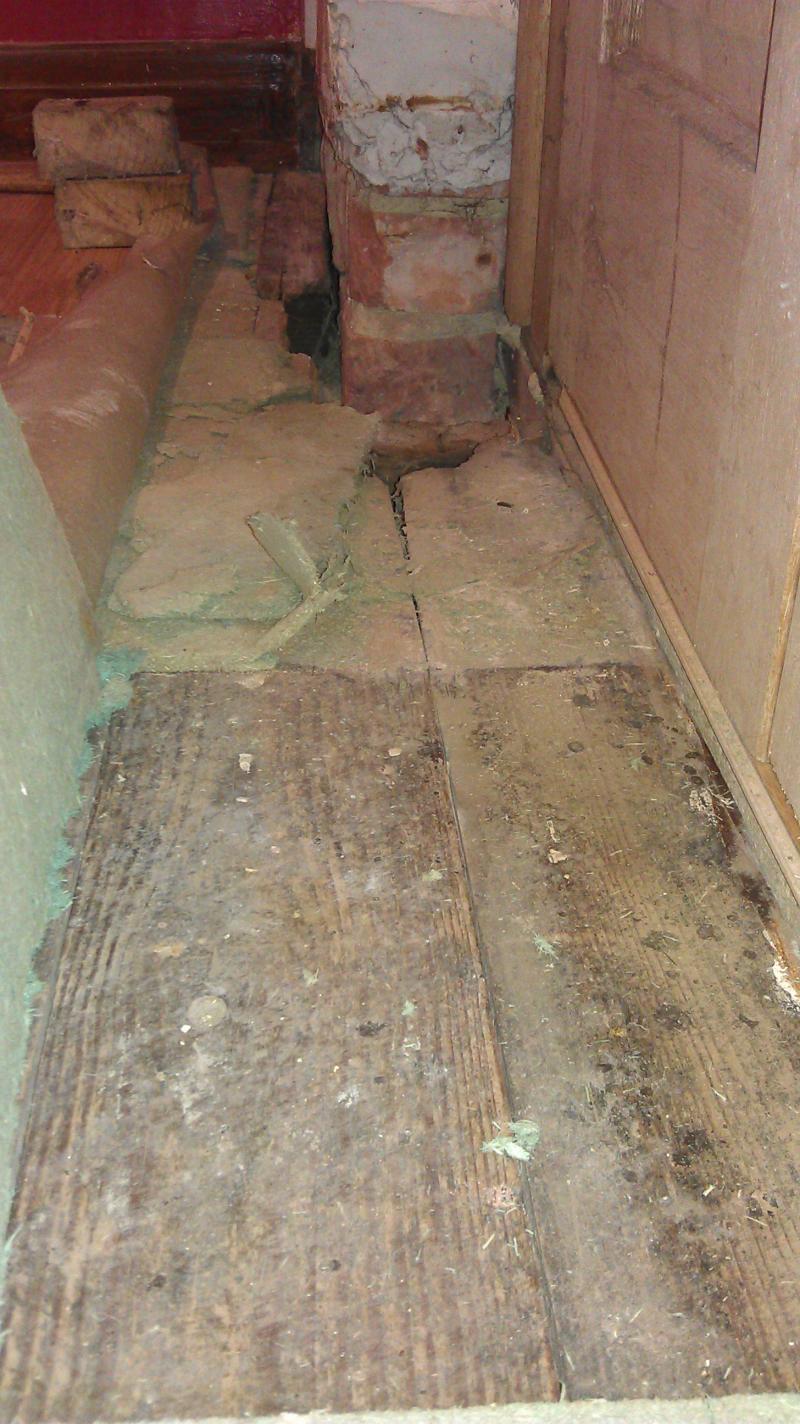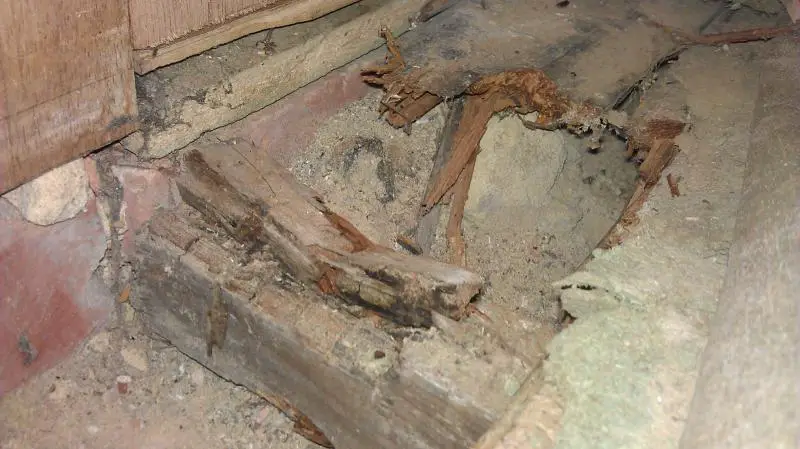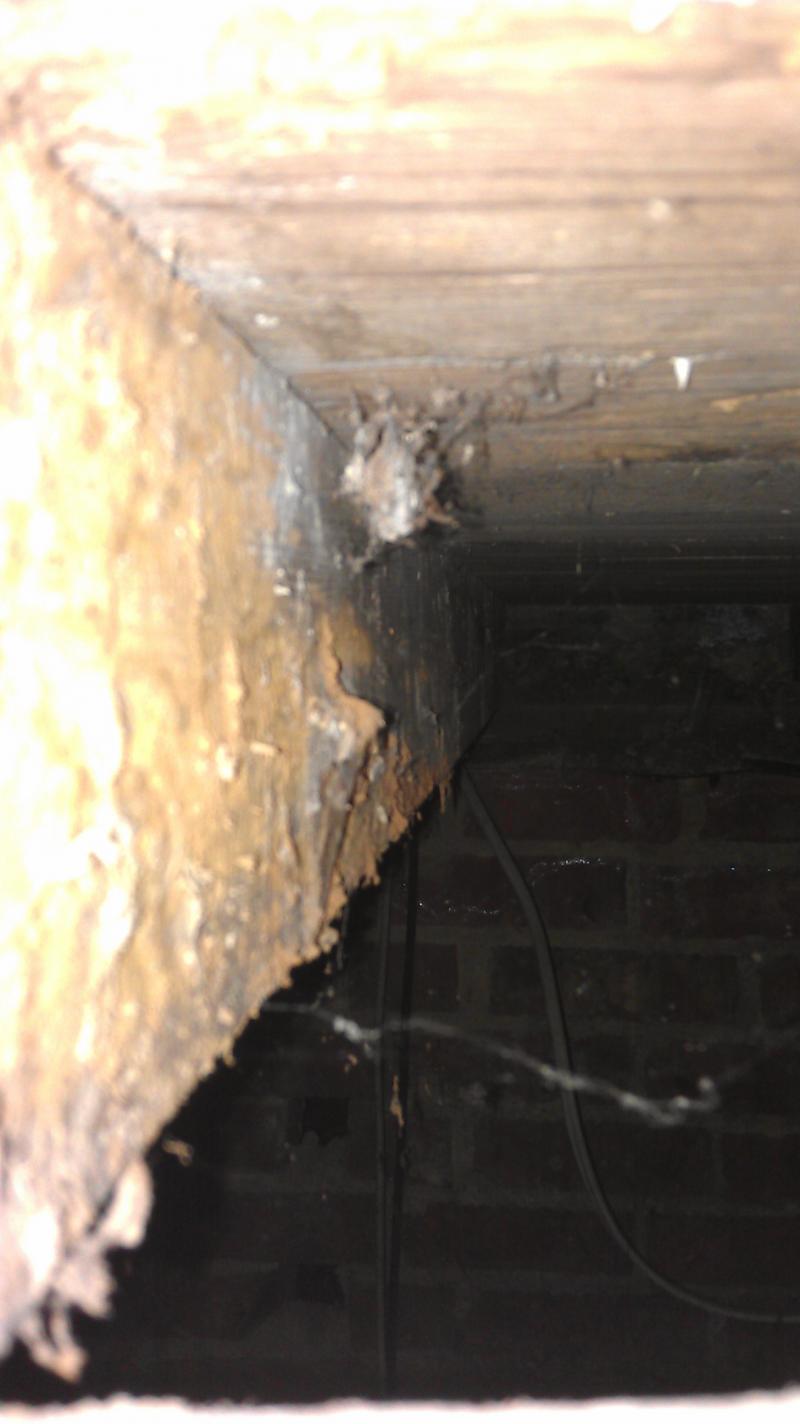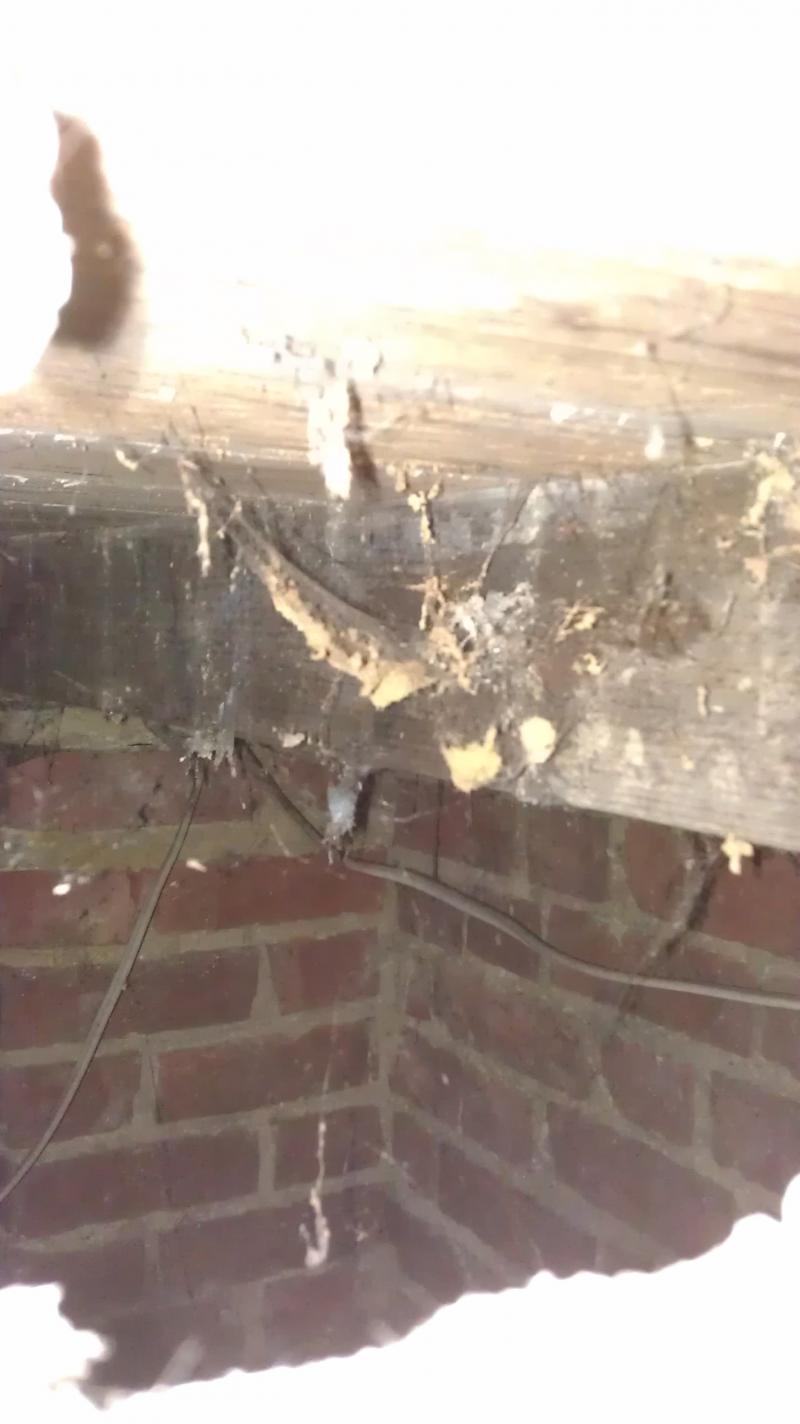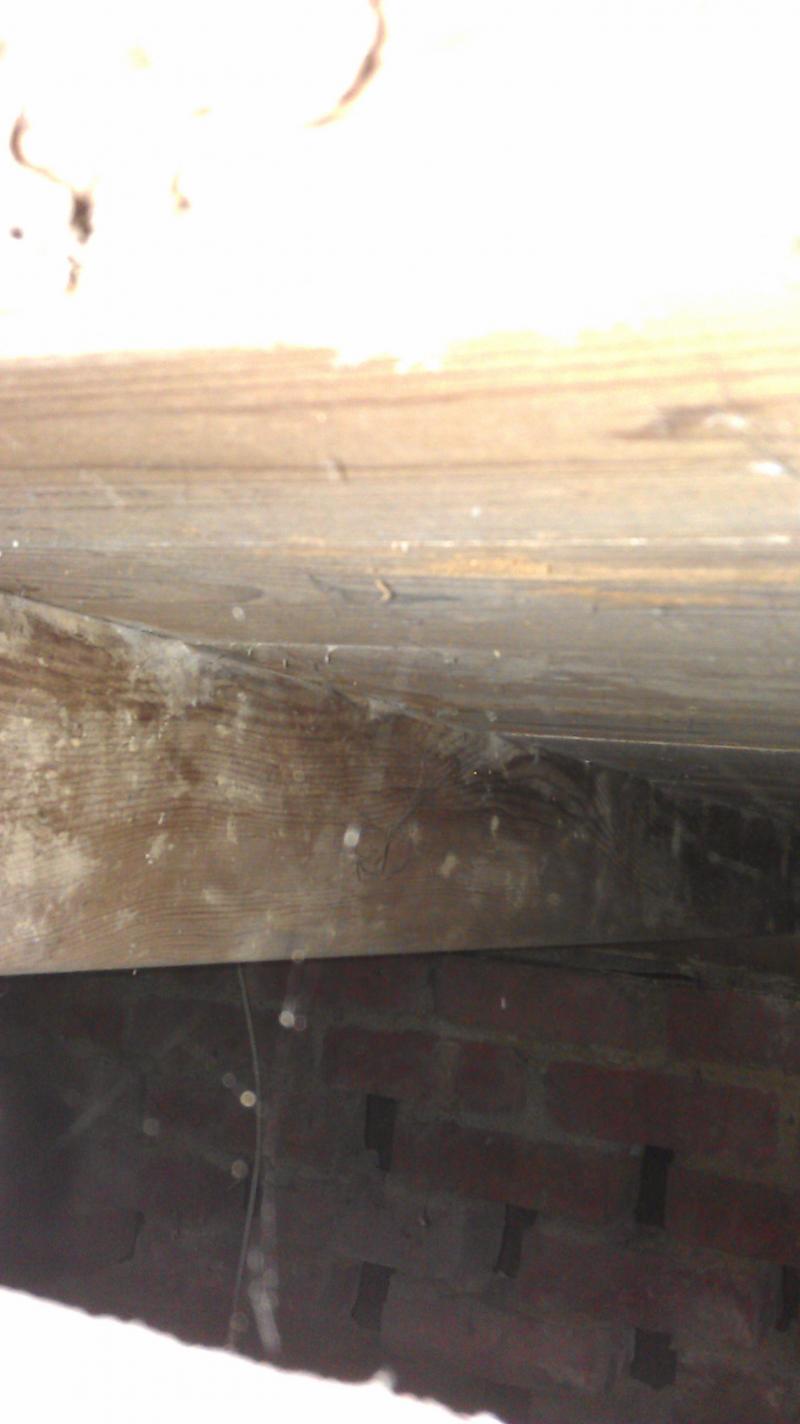Hi All,
So the examination of the house I just purchased continues and takes me to the laminate flooring in the rear room that adjoins the conservatory. I noticed this floor was not level and you could bounce on certain laminates - mainly towards the conservatory and where the end of the house sat.
First of all they are not connected correctly as it seems that laminate in the conservatory was laid after.
I decided to remove the skirting board that sits on the back wall adjoined the conservatory and try and remove the last part of laminate to take a look.
Pictures below, but what I discovered is making me think that I should remove all the laminate and level the flooring perhaps with MDF sheets?
The brickwork low down was visible and I can feel airflow (perhaps just ventilation?
The initial wooden blocks the previous owner used as supports seem to be crumbling! For info the house was built in the 1920/1930s
My questions really are:
1) Should I remove all the laminate and level the floor with MDF sheets? I have no idea what I will find underneath
2) Does the brick work need to be covered ?
3) Should I be worried about the air I can feel?
I am a novice to DIY so please be gentle
So the examination of the house I just purchased continues and takes me to the laminate flooring in the rear room that adjoins the conservatory. I noticed this floor was not level and you could bounce on certain laminates - mainly towards the conservatory and where the end of the house sat.
First of all they are not connected correctly as it seems that laminate in the conservatory was laid after.
I decided to remove the skirting board that sits on the back wall adjoined the conservatory and try and remove the last part of laminate to take a look.
Pictures below, but what I discovered is making me think that I should remove all the laminate and level the flooring perhaps with MDF sheets?
The brickwork low down was visible and I can feel airflow (perhaps just ventilation?
The initial wooden blocks the previous owner used as supports seem to be crumbling! For info the house was built in the 1920/1930s
My questions really are:
1) Should I remove all the laminate and level the floor with MDF sheets? I have no idea what I will find underneath
2) Does the brick work need to be covered ?
3) Should I be worried about the air I can feel?
I am a novice to DIY so please be gentle




